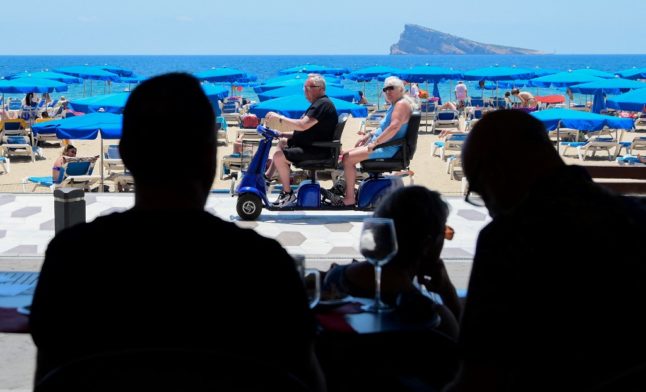The hobbits, small characters with hairy feet in novelist J. R. R. Tolkien’s fantasy classics, are a model of environmentally friendly living, said British hobbit-house architect Simon Dale.
“Hobbits portray people living a peaceful life in harmony with nature,” Dale, 35, told AFP on a recent visit to Stockholm.
He was in town to plan for the cluster of 30 houses on Muskö, an island located some 40 kilometres from the city centre as the crow flies amid Stockholm’s picturesque archipelago. The island’s first hobbit house is scheduled to be ready in mid-2014, with the village completed within a few years.
At first sight, the huts resemble Bilbo Baggins’s dwellings in the Shire in Tolkien’s 1937 novel The Hobbit.
Click here for a gallery of Simon Dale’s hobbit house in Wales
“In a hole in the ground there lived a hobbit,” begins Tolkien’s tale. “It had a perfectly round door like a porthole, painted green, with a shiny yellow brass knob in the exact middle.”
In Tolkien’s idyllic agrarian setting, the hobbits live in tune with nature – in stark contrast to the author’s era of mature industrialization. The Swedish hobbit village will keep the notion of natural materials and soft, round shapes: the windows, doors and walls will all be curved.
Yet the houses will be slightly more up-to-date, built for modern city-dwellers longing to retreat to nature on weekends and holidays. An induction hob, beside a wood-burning range, will be the “most high-tech thing integrated,” said Dale, whose design promises airy ceilings up to 3.5 metres high.
Energy efficiency will be a primary goal, so heating will come from solar power and wood-burning. Natural building materials from the area will also be used, such as timber, stone, sand, clay and grass.
Dale himself has lived in a hobbit house for the past decade with his wife and two kids. The family now resides in the West Wales community of Lammas, the first British low-impact eco-village of its kind. Building the earth houses has become a passion, said Dale, originally a photographer.
The village isn’t targeted at fans of Tolkien’s “The Lord of the Rings” – rather, it’s intended to appeal to those who care about the environment and want to live close to nature.
“It’s a transition in lifestyle and values,” said Dale, who bears a faint resemblance to Bilbo as played by Martin Freeman in the new “Hobbit” blockbuster film trilogy.
‘Hobbit-holes’ and a Dream Farm
Sweden, like other countries taking the lead in sustainable development, has in recent years seen a boom in eco-friendly urban renewal projects. But Dale noted a key difference between those projects and his.
They “aim to maximize the efficiency of resource consumption, while we aim to minimize resource consumption,” he said, adding that sustainability doesn’t require fancy new gadgets but can instead be attained by living more simply.
He said Muskö was the perfect location for his project. Home to a naval base decommissioned nine years ago, the island has a natural forest and farming landscape, yet is conveniently equipped with well-developed infrastructure, including a grocery store, restaurant, pharmacy, public transport and a three-kilometre tunnel connecting it to the mainland.
The island is also home to an eco-project called Drömgården, or The Dream Farm, which is building an environmentally sustainable community and which invited Dale to collaborate. Apart from his “hobbit-holes”, the village will feature 350 eco-friendly homes.
Local farmers and residents are intrigued to see the old agricultural estate being brought back to life, providing jobs and atmosphere, said Dale. Yet for the moment the entire project remains in the realm of Tolkien’s fantasy, pending real-world bureaucratic clearance.
“It’s up to the municipality to give us the green light, but we’re optimistic,” said project organizer Marie Eriksson.
TT/The Local/og



 Please whitelist us to continue reading.
Please whitelist us to continue reading.
Member comments